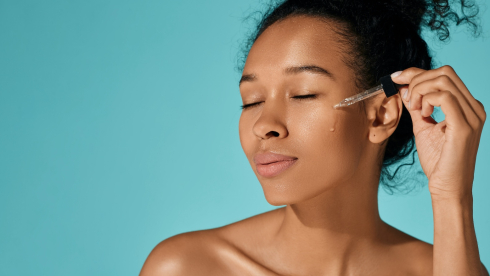Prior to New York City’s soft drink regulations being thrown out by the State Supreme Court, I’d actually participated in a panel where I shared my own thoughts as to why I thought a ban was senseless.
“I’ve built a community on my blog around educating ourselves, and being able to make our own decisions.”
That being said, let me be clear: soda is disgusting. But you should kick the habit on your own.
It’s one thing to occasionally want something with a hint of flavor to it, but your glass of coke is giving you much more than that. At an average rate of 29 grams for every 8 ounces you drink, your 20oz is housing a full 18 teaspoons – more than a third of a cup – of sugar.
That’s almost enough sugar to make a batch of cookies. It’s more sugar than you’ll find in a pound of apples. A pound of peaches. Two pounds of grapefruit. You could have a salad, a bottle of water, a scone and a pear for less sugar than you’ll find in the 20 oz of tragedy sitting on your desk right now.
In fact, I’m willing to bet that if I sat a 20-ounce glass of iced tea in front of you, right now, that you would not put 18 teaspoons of sugar in it. That’s right – you would not scoop your spoon into a sugar bowl 18 times, no matter how much better the glass of tea would taste with it, simply because it’d make you feel gluttonous.
But, really, it’s about so much more than feeling greedy. It’s about our old friends, Type 2 diabetes and high blood pressure.
What, you didn’t know that soft drinks contribute to high blood pressure? Look at that label, baby – why is there sodium in your soda? Sugar, by itself, is ineffective in providing the brain with the “Ahhhhh” feeling that makes you feel attached to a certain brand or recipe; it must come in conjunction with a fat or a salt. It appears that the soft drink industry chose to pair its sugars with salt.
Recently, a rather lengthy study appeared in the medical journal PLoS drawing a correlation to the flooding of sugar into the nutritional market, and the rise of diabetes in America. There’s one part of the research that made quite a damning statement: for every 306 million cans of sugary drink packaged and shipped for sale within the US, the rate of diabetes goes up at least 1%. And no, that’s not just pop – that’s juices, “smoothie drinks,” and anything sugar-sweetened.
Correlation doesn’t automatically equal causation, of course, but that doesn’t mean it shouldn’t make you think. The more sugar there is in our market, the more diabetes there is in our homes. A quick look at the New York City Board of Health research that compared self-reported soda consumption rates to the rates of obesity in any given neighborhood shows an even more disturbing comparison – the higher the sugary drink consumption, the higher the rate of obesity.
(There is, without a doubt, also the reality that the most obese parts of NYC are also among some of the poorest which also contributes to an inability to eat healthily, but that’s even worse; what kind of world do we live in where some of the only stuff you can afford is sugary, non-nutritious caffeinated product?)
There is, however, hope.
As disgusting as I find soft drinks – really, all sugary drinks, to be honest – I can understand how they’d be difficult to give up. I tell my clients all the time, don’t be afraid to give up your sodas for tea. Anything from vanilla to hibiscus can give off fantastic flavor that, even if sweetened with a bit of sugar, can help you trade off your nasty little habit. If you’re missing that carbonation, add a little seltzer water to your tea. If you’re missing the caffeine, drinking black coffee – even if you sweetened it with a pack of sugar – is still infinitely better for you than that bottle on your desk. And, if you want something different, a kombucha will provide you with a nice probiotic boost with a little fizz, naturally occurring sugars and even a bit of nutrition.
Don’t wait for your elected officials to overstep their authoritative bounds. Give up the nasty stuff on your own. It’s the best thing you can do for your body.
Erika Nicole Kendall is the writer behind the award winning blog, A Black Girl’s Guide to Weight Loss, where she blogs her journey of losing over 150lbs. A trainer certified in women’s fitness, fitness nutrition and weight loss coaching, she can be found taking over your Internet on Youtube, Facebook, Instagram and Twitter.













